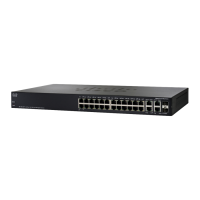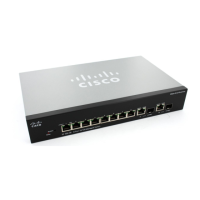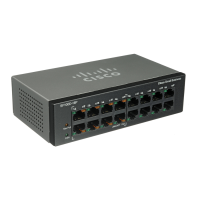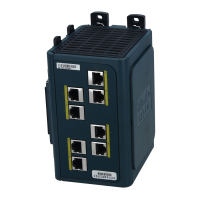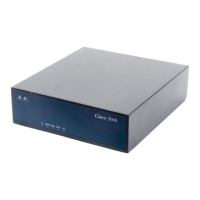IP Configuration
IPv4 Management and Interfaces
272 Cisco Small Business 200, 300 and 500 Series Managed Switch Administration Guide (Internal Version)
17
• In Layer 3, add a loopback interface in IP Configuration > IPv6 Management
and Interfaces > IPv6 Interface. Configure the IPv6 address of that interface
in the IP Configuration > IPv6 Management and Interfaces > IPv6 Addresses
page.
IPv4 Management and Interfaces
IPv4 Interface
IPv4 interfaces can be defined on the device when it is in Layer 2 or Layer 3
system mode.
Defining an IPv4 Interface in Layer 2 System Mode
To manage the device by using the web-based configuration utility, the IPv4
device management IP address must be defined and known. The device IP
address can be manually configured or automatically received from a DHCP
server.
To configure the IPv4 device IP address:
STEP 1 Click Administration > Management Interface > IPv4 Interface.
STEP 2 Enter values for the following fields:
• Management VLAN—Select the Management VLAN used to access the
device through telnet or the Web GUI. VLAN1 is the default Management
VLAN.
• IP Address Type—Select one of the following options:
-
Dynamic
—Discover the IP address using DHCP from the management
VLAN.
-
Static
—Manually define a static IP address.
NOTE DHCP Option 12 (Host Name option) is supported when the device is
a DHCP client. If DHCP Option 12 is received from a DHCP server, it is saved
as the server’s host name. DHCP option 12 will not be requested by the
device. The DHCP server must be configured to send option 12, regardless
of what is requested in order to make use of this feature.
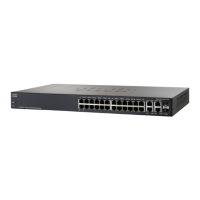
